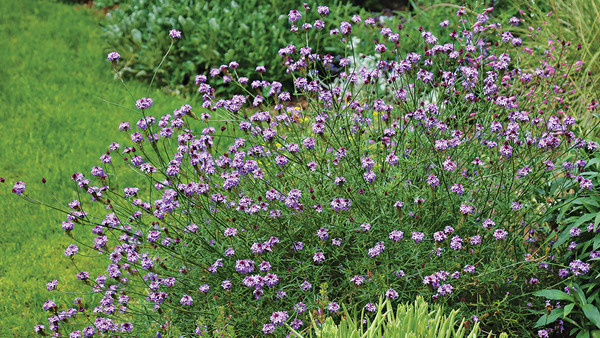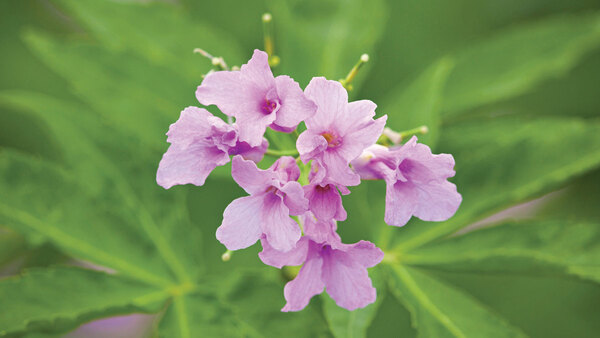
We all have certain plants that immediately come to mind when thinking of a garden in spring. For many, these are daffodils, tulips, and hyacinths skirting the trunks of flowering magnolias, cherries, and lilacs. But as William Cullina discusses in his article 9 Perennials to Liven Up Your Spring Garden, there are lots of out-of-the-ordinary or simply underappreciated plants that can elevate your spring garden to something spectacular.
Find some outstanding spring plants for the Midwest below. And discover even more surprising spring stars in 9 Perennials to Liven Up Your Spring Garden.
1. American Wisteria

Name: Wisteria frutescens
Zones: 5–9
Size: 15 to 30 feet tall and 4 to 8 feet wide
Conditions: Full sun; slightly acidic, moist, well-drained soil
Native range: Southern United States
If you love wisteria but are not impressed by the aggressive— in some regions, invasive—tendencies of the Asian species (W. sinensis), our North American native might be the answer. In April, an abundance of lilac blooms emerge along the vine, which will often reward you with an occasional rebloom throughout summer. Its small stature allows for training on smaller trellises, and it can even be grown in containers. However, pruning is still required to maintain and encourage next year’s blooms. ‘Amethyst Falls’, a newer cultivar, flowers a bit earlier than the species.
2. Spicebush

Name: Lindera benzoin
Zones: 4–9
Size: 6 to 12 feet tall and wide
Conditions: Full sun to partial shade; moderately moist, well-drained soil; will tolerate drought
Native range: Eastern United States
This early-blooming, native understory shrub provides multiseasonal interest, encourages biodiversity, and even adds a touch of fragrance. In March, before the foliage emerges, tiny clusters of aromatic yellow flowers bloom along the branches, lending a soft glow. The simple, oval leaves provide a nice garden backdrop, are very fragrant when crushed, and serve as an important larval food source for butterflies and moths, including the spicebush swallowtail butterfly. In fall, the bright yellow leaves fade, revealing vivid red fruits, which are scavenged by songbirds. Both a male and a female plant are needed to produce fruit.
3. Shooting Star

Name: Dodecatheon meadia
Zones: 4–8
Size 9 to 18 inches tall and 9 to 12 inches wide
Conditions: Full sun to partial shade; moderately moist, well-drained soil
Native range: Eastern and central North America
This native wildflower is sure to add charm to any garden. Its delicate, nodding, white-to-pink flowers appear in April and persist into May. Pair it with its native companion, wild hyacinth (Camassia scilloides, Zones 3–8), for a stunning late spring wildflower display. This is a true spring ephemeral, with foliage that disappears by midsummer, so plant it among ornamental grasses or other low-growing perennials that will take over once it is finished. For best results, plant it in fall.
4. Fremont’s Leather Flower

Name: Clematis fremontii
Zones: 4–7
Size: 12 to 18 inches tall and 9 to 12 inches wide
Conditions: Full sun to partial shade; moderately moist, well-drained soil
Native range: Central North America
If you enjoy clematis, your garden should not be without this native, nonvining, nonclimbing species, whose compact habit creates a lush mound of foliage. In April its irresistible purple-to- white, nodding, bell-shaped flowers begin to emerge. The blooms fade to attractive Sputnik-like fruit that lends a little fall character. This is a petite plant, so situate it next to a patio or walkway or in a rocky area of your yard, where you can enjoy the tiny blooms up close.
Jennifer Smock manages the Kemper Center for Home Gardening at the Missouri Botanical Garden in St. Louis.
Fine Gardening Recommended Products

Lee Valley Mini Garden Shear Set
Fine Gardening receives a commission for items purchased through links on this site, including Amazon Associates and other affiliate advertising programs.

Gardener's Supply Company Summerweight Fabric Plant Cover
Fine Gardening receives a commission for items purchased through links on this site, including Amazon Associates and other affiliate advertising programs.

Lee Valley Garden Knife
Fine Gardening receives a commission for items purchased through links on this site, including Amazon Associates and other affiliate advertising programs.


















Comments
Log in or create an account to post a comment.
Sign up Log in